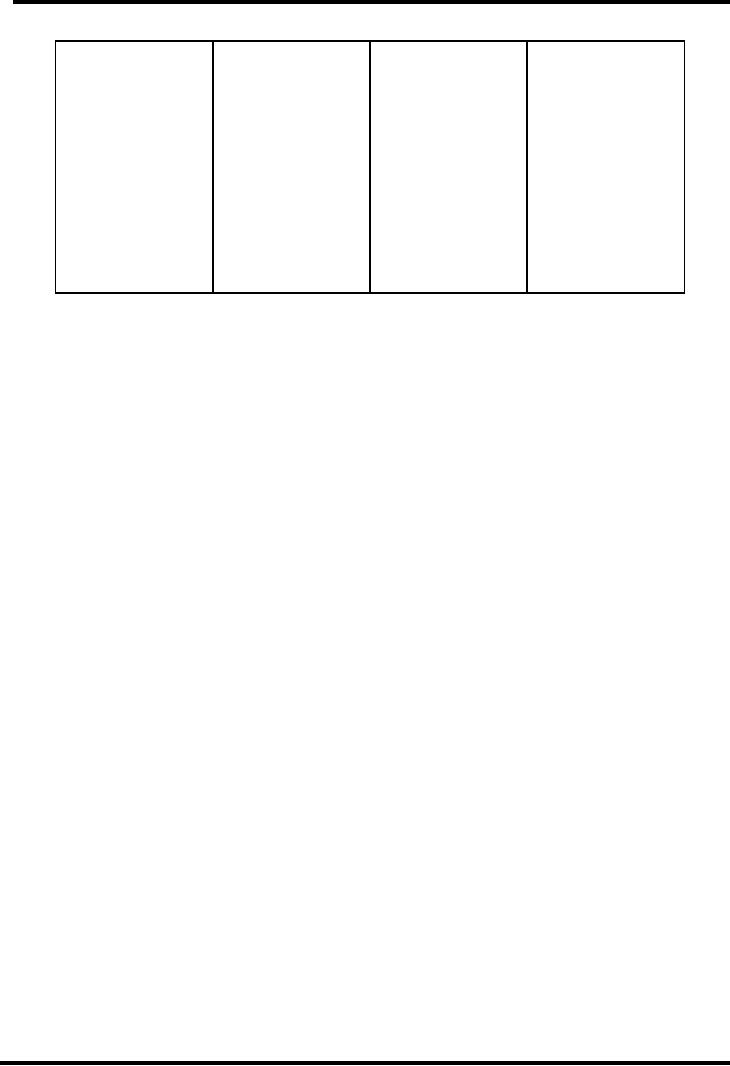 |
PARTS OF SPEECH:Noun Gender, Noun Plurals, Countable Nouns |
| << DICTIONARY-A WRITER’S LANGUAGE TOOL:KINDS OF INFORMATION |
| BASIC CLAUSE PATTERNS >> |

Journalistic
Writing MCM310
VU
LECTURE
10
PARTS
OF SPEECH
Parts
of speech can be divided
into two distinct
divisions:
1.
Picture words (Nouns, Verbs,
Adjectives, Adverbs)
2.
Function words (Pronouns,
Prepositions, Conjunctions,
Interjections)
WHAT
IS A NOUN?
A
noun
is a
word used to name a person,
animal, place, thing, and
abstract idea. Nouns are
usually the first
words
which small children learn.
The highlighted
words
in the following sentences are
all nouns:
Late
last year
our
neighbors
bought
a goat.
Portia
White was an
opera
singer.
The
bus
inspector looked
at all the passengers'
passes.
According
to Plutarch, the
library
at
Alexandria
was
destroyed in 48 B.C.
Philosophy
is of
little comfort
to the
starving.
A
noun can function in a
sentence as a subject, a direct object, an
indirect object, a subject complement,
an
object
complement, an appositive, an adjective or an
adverb.
Noun
Gender
Many
common nouns, like "engineer" or
"teacher," can refer to men or
women, for example, a
man
was
called an "author" while a
woman was called an
"authoress"; in hotels a service
person male is
"waiter"
and female is "waitress".
Noun
Plurals
Most
nouns change their form to
indicate number by adding "-s" or "-es", as illustrated in the
following pairs
of
sentences: truth and truths;
Box and boxes
etc.
Possessive
Nouns
In
the possessive case, a noun or
pronoun changes its form to
show that it owns or is
closely related to
something
else. Usually, nouns become
possessive by adding a combination of an
apostrophe and the letter
"s."
The
red suitcase is Cassandra's.
The
only luggage that was lost
was the prime
minister's.
The
children's
mittens
were scattered on the floor of the
porch.
The
concert was interrupted by the
dogs'
barking, the
ducks'
quacking,
and the babies'
squalling.
Types
of Nouns
There
are many different types of
nouns. If you are interested
in the details of these different
types, you can
read
about them in the following
sections.
Proper
Nouns
You
always write a proper
noun with a
capital letter, since the
noun represents the name of a
specific person,
place,
or thing. The names of days
of the week, months, historical documents,
institutions, organizations,
religions,
their holy texts and
their adherents are proper
nouns. A proper noun is the opposite of a
common
noun
The
Maroons
were
transported from Jamaica
and
forced to build the fortifications in
Halifax.
Many
people dread Monday
mornings.
Abraham
appears
in the Talmud
and in
the Koran.
Common
Nouns
A
common
noun is a
noun referring to a person,
place, or thing in a general
sense --
According
to the sign, the
nearest town
is 60
miles
away.
The
road crew
was
startled by the sight
of
three large moose
crossing
the road.
32

Journalistic
Writing MCM310
VU
Concrete
Nouns
A
concrete
noun is a
noun which names anything
(or anyone) that you
can perceive through your
physical
Senses:
touch, sight, taste, hearing, or
smell. A concrete noun is the opposite of
an abstract noun.
The
highlighted
words
in the following sentences are
all concrete nouns:
The
judge
handed
the files
to the
clerk.
Whenever
they take the dog
to the
beach, it
spends hours
chasing
waves.
The
book
binder replaced
the flimsy paper cover
with a
sturdy, cloth-covered board.
Abstract
Nouns
An
abstract
noun is a
noun which names anything
which you can not
perceive
through your five
physical
senses,
and is the opposite of a concrete noun.
The highlighted
words
in the following sentences are
all
abstract
nouns:
Buying
the fire extinguisher was an afterthought.
Tillie
is amused by people who are
nostalgic about childhood.
Justice
often
seems to slip out of our
grasp.
Some
scientists believe that
schizophrenia
is transmitted
genetically.
Countable
Nouns
A
countable
noun (or
count
noun) is a
noun with both a singular
and a plural form, and it
names anything
(or
anyone) that you can
count. In
each of the following sentences, the
highlighted
words
are countable nouns:
We
painted the table
red
and the chairs
blue.
Miriam
found six silver dollars
in the
toe
of a
sock.
The
oak tree
lost
three branches
in the
hurricane.
Non-Countable
Nouns
A
non-countable
noun (or
mass
noun) is a
noun which does not
have a plural form, and
which refers to
something
that you could (or
would) not usually
count.
Joseph
Priestly discovered oxygen.
We
decided to sell the furniture.
Collective
Nouns
A
collective
noun is a
noun naming a group of things,
animals, or persons. You could
count the individual
members
of the group, but you usually
think of the group as a whole is
generally as one unit. In
each of the
following
sentences, the highlighted
word
is a collective noun:
The
flock
of
geese spends most of its
time in the pasture.
The
jury
is
dining on take-out chicken
tonight.
The
steering committee
meets
every Wednesday
afternoon.
The
class
was
startled by the bursting light
bulb.
WHAT
IS A VERB?
The
verb is perhaps the most
important part of the sentence. A
verb
or compound
verb asserts
something
about
the subject of the sentence and
express actions, events, or
states of being. The verb or
compound verb is
the
critical element of the predicate of a
sentence.
In
each of the following sentences, the
verb or compound verb is
highlighted:
Dracula
bites
his
victims on the neck.
In
early October, Giselle will
plant twenty
tulip bulbs.
My
first teacher was
Miss
Crawford, but I remember the janitor
Mr. Weatherbee more
vividly.
Karl
Creelman bicycled around the world in
1899, but his diaries
and his bicycle were
destroyed.
WHAT
IS AN ADJECTIVE?
An
adjective
modifies a
noun or a pronoun by describing,
identifying, or quantifying words. An
adjective
usually
precedes the noun or the pronoun which it
modifies.
In
the following examples, the highlighted
words
are adjectives:
The
truck-shaped
balloon
floated over the
treetops.
Mrs.
Morrison papered her
kitchen
walls
with hideous
wall
paper.
The
small
boat
foundered on the wine
dark sea.
33

Journalistic
Writing MCM310
VU
The
coal
mines
are dark
and
dank.
Many
stores
have already begun to play
irritating
Christmas music.
A
battered
music box
sat on the mahogany
sideboard.
The
back room was filled
with large,
yellow
rain
boots.
Possessive
Adjectives
A
possessive
adjective (``my,''
``your,'' ``his,'' ``her,'' ``its,''
``our,'' ``their'') is similar or
identical to a
possessive
pronoun; however, it is used as an
adjective and modifies a noun or a
noun phrase, as in the
following
sentences:
What
is your
phone
number?
The
bakery sold his
favorite
type of bread.
Demonstrative
Adjectives
The
demonstrative
adjectives ``this,''
``these,'' ``that,'' ``those,''
and ``what'' are identical to the
demonstrative
pronouns,
but are used as adjectives
to modify nouns or noun
phrases, as in the following
sentences:
This
apartment
needs to be fumigated.
Even
though my friend preferred those
plates,
I bought these.
Which
plants
should be watered twice a
week?
What
book
are you reading?
Indefinite
Adjectives
An
indefinite
adjective is
similar to an indefinite pronoun,
except that it modifies a noun,
pronoun, or noun
phrase,
as in the following sentences:
Many
people
believe that corporations are
under-taxed.
The
indefinite adjective ``many'' modifies the
noun ``people'' and the noun
phrase ``many people'' is the
subject
of the sentence.
I
will send you any
mail
that arrives after you have
moved to Sudbury.
They
found a
few goldfish
floating belly up in the swan
pound.
WHAT
IS AN ADVERB?
An
adverb
can
modify a verb, an adjective, another
adverb, a phrase, or a clause. An
adverb indicates
manner,
time,
place, cause, or degree and
answers questions such as
"how," "when," "where," "how
much".
While
some adverbs can be
identified by their characteristic
"ly" suffix, most of them
must be identified by
untangling
the grammatical relationships within the
sentence or clause as a whole. Unlike an
adjective, an
adverb
can be found in various
places within the
sentence.
In
the following examples, each of the
highlighted
words
is an adverb:
The
seamstress quickly
made
the mourning clothes.
In
this sentence, the adverb "quickly"
modifies the verb "made" and
indicates in what manner (or
how fast) the
clothing
was constructed.
The
midwives waited patiently
through
a long labor.
The
boldly-spoken
words would return to haunt
the rebel.
We
urged him to dial the number
more expeditiously.
Unfortunately, the bank
closed at three today.
WHAT
IS A PRONOUN?
A
pronoun
can
replace a noun or another pronoun.
You use pronouns like "he,"
"which," "none," and
"you"
to
make your sentences less
cumbersome and less
repetitive.
Grammarians
classify pronouns into
several types, including the
personal pronoun, the demonstrative
pronoun,
the
interrogative pronoun, the indefinite
pronoun, the relative pronoun, the
reflexive pronoun, and
the
intensive
pronoun.
Personal
Pronouns
A
personal
pronoun refers
to a specific person or thing
and changes its form to
indicate person, number,
gender,
and case.
34

Journalistic
Writing MCM310
VU
Subjective
Personal Pronouns
Reflexive
pronoun
Object
Pronoun
Personal
Possessive
Subject
Pronouns
Pronouns
Myself
Me
My/mine
I
Ourselves
Us
Our
We
Yourself
You
Yours
truly
You
Himself
Him
His
He
Herself
Her
Her
She
Itself
It
Its
It
Themselves
Them
Their
They
Subject
pronoun:
You
are
surely the strangest child
I
have
ever met.
Possessive
pronoun:
The
smallest gift is mine.
Object
pronoun:Aroma forced her
parents
to stay with her.
Reflexive
pronoun:
You
can help yourself.
.
Demonstrative
Pronouns
A
demonstrative
pronoun points
to and identifies a noun or a pronoun.
"This" and "these" refer to things
that
are nearby either in space or in time,
while "that" and "those"
refer to things that are farther
away in space
or
time.
This
must
not continue.
This
is
puny; that
is the
tree I want.
Three
customers wanted these.
Interrogative
Pronouns
An
interrogative
pronoun is
used to ask questions. The
interrogative pronouns are "who,"
"whom," "which,"
"what"
and the compounds formed
with the suffix "ever"
("whoever," "whomever," "whichever,"
and
"whatever").
Which
wants
to see the dentist first?
Who
wrote
the novel Rockbound?
Whom
do you
think we should invite?
To
whom
do you
wish to speak?
Who
will
meet the delegates at the train
station?
To
whom
did
you give the paper?
Relative
Pronouns
You
can use a relative
pronoun is
used to link one phrase or
clause to another phrase or clause.
The relative
pronouns
are "who," "whom," "that,"
and "which." The compounds
"whoever", "whomever",
and
"whichever"
are also relative pronouns.
You
may invite whomever
you
like to the party.
The
candidate who
wins
the greatest popular vote is
not always elected.
Whoever
broke
the window will have to
replace it.
The
crate which
was
left in the corridor has now
been moved into the storage
closet.
I
will read whichever
manuscript
arrives first.
Indefinite
Pronouns
An
indefinite
pronoun is a
pronoun referring to an identifiable
but not specified person or
thing. An
indefinite
pronoun conveys the idea of all,
any, none, or some.
35

Journalistic
Writing MCM310
VU
The
most common indefinite pronouns are
"all," "another," "any,"
"anybody," "anyone," "anything,"
"each,"
"everybody,"
"everyone," "everything," "few,"
"many," "nobody," "none,"
"one," "several," "some,"
"somebody,"
and "someone." The highlighted
words
in the following sentences are
indefinite pronouns:
Many
were
invited to the lunch but
only twelve showed up.
The
office had been searched
and everything
was
thrown onto the
floor.
We
donated everything
we
found in the attic to the woman's shelter
garage sale.
Although
they looked everywhere for
extra copies of the magazine, they
found none.
Reflexive
Pronouns
You
can use a reflexive
pronoun to refer
back to the subject of the clause or
sentence. The reflexive
pronouns
are
"myself," "yourself," "herself,"
"himself," "itself," "ourselves," "yourselves,"
and "themselves." Each of
the
highlighted
words
in the following sentences is a reflexive
pronoun:
Diabetics
give themselves
insulin
shots several times a
day.
The
Dean often does the photocopying
herself
so
that the secretaries can do
more important work.
After
the party, I asked myself
why I
had faxed invitations to everyone in my
office building.
WHAT
IS A PREPOSITION?
A
preposition
links
nouns, pronouns and phrases to
other words in a sentence.
The word or phrase that
the
preposition
introduces is called the object of the
preposition.
A
preposition usually indicates the
temporal, spatial or logical relationship of its
object to the rest of the
sentence
as in the following examples:
The
book is on
the
table.
The
book is beneath
the
table.
The
book is leaning against
the
table.
The
book is beside
the
table.
She
held the book over
the
table.
She
read the book during
class.
In
each of the preceding sentences, a
preposition locates the noun
"book" in space or in time.
A
prepositional phrase is made up of the
preposition, its object and
any associated adjectives or
adverbs. A
prepositional
phrase can function as a
noun, an adjective, or an adverb.
The most common prepositions
are
"about,"
"above," "across," "after," "against,"
"along," "among," "around,"
"at," "before," "behind,"
"below,"
"beneath,"
"beside," "between," "beyond," "but,"
"by," "despite," "down,"
"during," "except," "for,"
"from,"
"in,"
"inside," "into," "like,"
"near," "of," "off," "on,"
"onto," "out," "outside,"
"over," "past," "since,"
"through,"
"throughout," "till," "to,"
"toward," "under," "underneath,"
"until," "up," "upon,"
"with," "within,"
and
"without."
Each
of the highlighted
words
in the following sentences is a
preposition:
The
children climbed the mountain without
fear.
In
this sentence, the preposition "without"
introduces the noun "fear"
The prepositional phrase
"without fear"
functions
as an adverb describing how the
children climbed.
There
was rejoicing throughout
the land when the
government was defeated.
The
spider crawled slowly along
the
banister.
The
dog is hiding under
the
porch because it knows it
will be punished for
chewing
up a new pair of
shoes.
The
screenwriter searched for
the
manuscript he was certain
was somewhere in
his
office.
WHAT
IS A CONJUNCTION?
You
can use a conjunction
to
link words, phrases, and
clauses, as in the following
example:
I
ate the pizza and
the
pasta.
Call
the movers when
you
are ready.
Coordinating
Conjunctions
You
use a coordinating
conjunction ("and,"
"but," "or," "nor," "for,"
"so," or "yet") to join
individual words,
phrases,
and independent clauses. Note
that you can also
use the conjunctions "but" and
"for" as prepositions.
In
the following sentences, each of the
highlighted
words
is a coordinating conjunction:
Lilacs
and
violets
are usually purple.
36

Journalistic
Writing MCM310
VU
In
this example, the coordinating
conjunction "and" links two
nouns.
This
movie is particularly interesting to feminist
film theorists, for
the
screenplay was written by
Mae
West.
Subordinating
Conjunctions
A
subordinating
conjunction introduces
a dependent clause and
indicates the nature of the
relationship
among
the independent clause(s) and the
dependent clause(s).
The
most common subordinating conjunctions are
"after," "although," "as," "because,"
"before," "how,"
"if,"
"once,"
"since," "than," "that," "though,"
"till," "until," "when,"
"where," "whether," and
"while." Each of the
highlighted
words
in the following sentences is a subordinating
conjunction:
After
she
had learned to drive, Alice
felt more independent.
The
subordinating conjunction "after"
introduces the dependent clause
"After she had learned to
drive."
If
the paperwork
arrives on time, your cheque
will be mailed on
Tuesday.
Gerald
had to begun his thesis
over again when
his
computer crashed.
Correlative
Conjunctions
Correlative
conjunctions always
appear in pairs -- you use
them to link equivalent sentence
elements. The
most
common correlative conjunctions are "both...and,"
"either...or," "neither...nor,", "not
only...but also,"
"so...as
"and" whether...or." (Technically
correlative conjunctions consist simply of a
coordinating conjunction
linked
to an adjective or adverb.)
The
highlighted
words
in the following sentences are
correlative conjunctions:
Both
my grandfather
and
my
father worked in the steel
plant.
In
this sentence, the correlative conjunction
"both...and" is used to link the
two noun phrases that
act as the
compound
subject of the sentence: "my
grandfather" and "my
father".
Bring
either
a
Jello salad or
a
potato scallop.
Corinne
is trying to decide whether
to go to
medical school or
to go to
law school.
The
explosion destroyed not
only the
school but
also the
neighboring pub.
WHAT
IS AN INTERJECTION?
An
interjection
is a
word added to a sentence to
convey emotion. It is not
grammatically related to any
other
part
of the sentence.
You
usually follow an interjection
with an exclamation mark.
Interjections are uncommon in formal
academic
prose,
except in direct quotations. The
highlighted
words
in the following sentences are
interjections:
Ouch, that
hurt!
Oh
no, I
forgot that the exam was
today.
Hey! Put
that down!
I
heard one guy say to another
guy, "He has a new car,
eh?"
I
don't know about you but,
good
lord, I
think taxes are too
high!
Source:
http://www.arts.uottawa.ca/writcent/hypergrammar/partsp.html
37
Table of Contents:
- INTRODUCTION TO JOURNALISTIC WRITING:Practical, THINGS TO KNOW
- QUALITIES OF GOOD WRITERS
- QUALITIES OF GOOD WRITERS
- QUALITIES OF GOOD WRITING:Achieve appropriate readability:
- QUALITIES OF GOOD WRITING:Be concise, Be creative, Be correct
- THE PROCESS OF WRITING:INVENTION, WHEN YOU START TO WRITE
- THE PROCESS OF WRITING II:ORGANIZING, DRAFTING, REVISING
- ALL ABOUT WORDS:HOW WORDS ARE FORMED?:SUFFIXES
- DICTIONARY-A WRITER’S LANGUAGE TOOL:KINDS OF INFORMATION
- PARTS OF SPEECH:Noun Gender, Noun Plurals, Countable Nouns
- BASIC CLAUSE PATTERNS
- ACTIVE AND PASSSIVE VOICE
- MODIFIERS AND SENTENCE TYPES:COMPOUND SENTENCES
- REPORTED SPEECH:Indirect Questions, Direct commands
- GRAMMATICAL SENTENCE – ISSUES:SUBJECT-VERB AGREEMENT
- GRAMMATICAL SENTENCE – ISSUES II:SENTENCE FRAGMENTS
- EFFECTIVE SENTENCE:PARALLELISM, NEEDED WORDS, SHIFTS
- STYLE: GUIDELINE AND PITFALLS I:COLLOQUIAL VS FORMAL, CIRCUMLOCUTION
- STYLE: GUIDELINE AND PITFALLS II:AMBIGUITY, REDUNDANCY, EUPHEMISM:
- PARAGRAPH WRITING: TYPES AND TECHNIQUES:STRUCTURE
- PARAGRAPH WRITING: TYPES AND TECHNIQUES:Putting on Our Play
- ESSAY WRITING:VARIOUS STRATEGIES FOR ESSAYS, PROMPTS
- SIGNAL WORDS:Non word Emphasis Signals
- EXPOSITORY WRITING:LOGICAL FALLACIES, APPEAL TO EMOTION
- THE WRITING STYLES: REPORT and NARRATIVE WRITING, SHORT REPORTS
- THE WRITING STYLES: DESCRIPTIVE AND PERSUASIVE WRITINGS, Observation
- RESEARCH WRITING AND DOCUMNETING SOURCES:Handling Long Quotations
- Summary and Précis Writing:CHARACTERISTICS OF GOOD SUMMARY
- Punctuation:THE PERIOD, THE COMMA, THE SEMICOLON, THE COLON
- MECHANICS:ABBREVIATIONS, NUMBERS, SPELLING, THE HYPHEN
- READING SKILLS FOR WRITERS:EDUCATED READING, STEPS
- PARTS OF A NEWSPAPER:Box-out, By-line, Caption, Exclusive, Feature
- THE LANGUAGE OF THE NEWSPAPERS II:BROADSHEET NEWSPAPER
- News Writing and Style I:WHAT TO LOOK FOR IN A NEWSPAPER
- NEWS WRITING II:Accuracy, Clarity, Style, Qualities of Effective Leads
- EDITORIAL WRITING:WRITING AN EDITORIAL:STRUCTURING AN EDITORIAL
- WRITING FEATURES:GENERATING FEATURE STORY IDEAS
- WRITING COLUMNS:Column and a news report, Purpose, Audience
- WRITING ARTICLES FOR NEWSPAPERS:The Heading, The Lead
- WRITING ANALYSIS:purpose, scope, method, results, recommendations
- LETTERS TO EDITORS:Four important aspects about letters, Organizing letters
- BROADCAST AND WEB NEWS WRITING:WRITE CONCISELY, BROADCAST STYLE
- WRITING PRESS RELEASE, REVIEWS AND OBITUARIES:Summary of Content:
- THE ART OF INTERVIEWINGS
- FINAL THOUGHTS:Practical, Job-Related, Social, Stimulating, Therapeutic